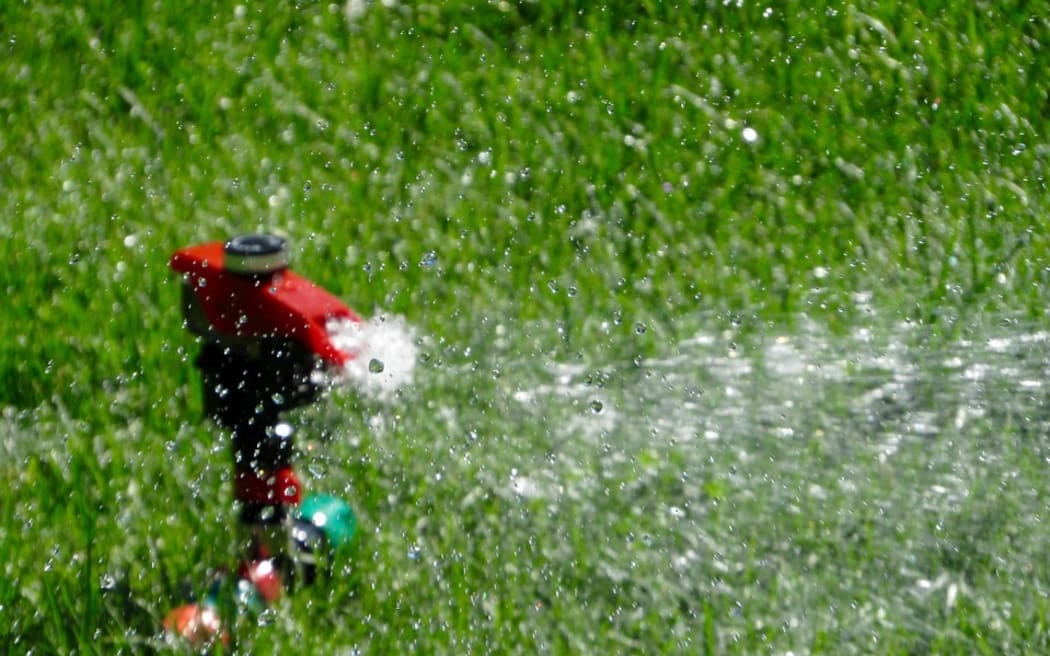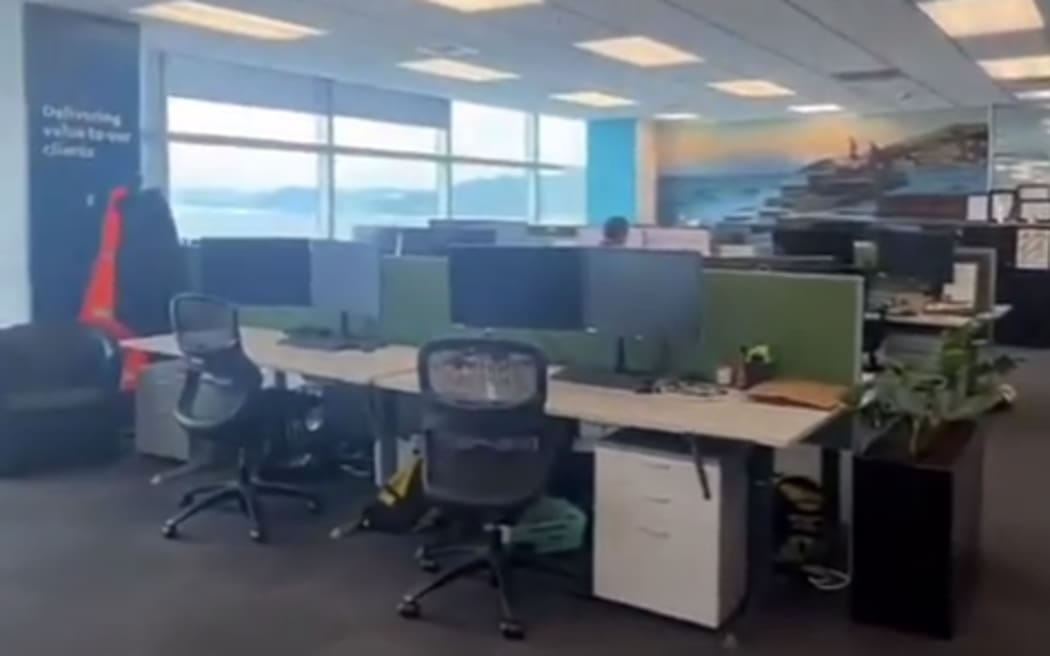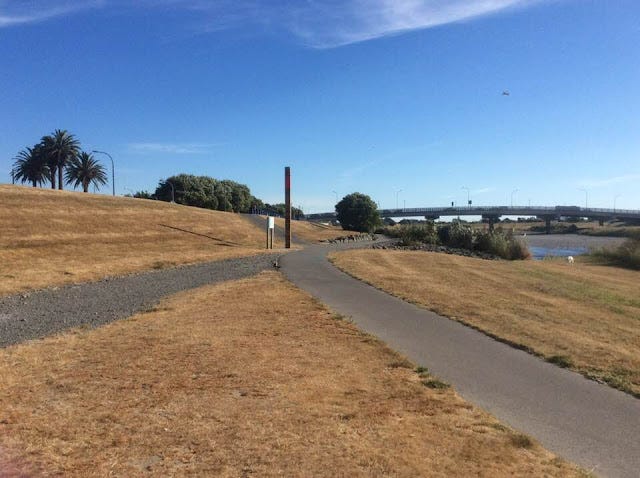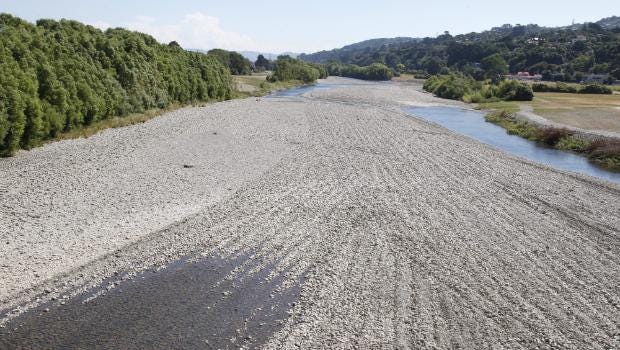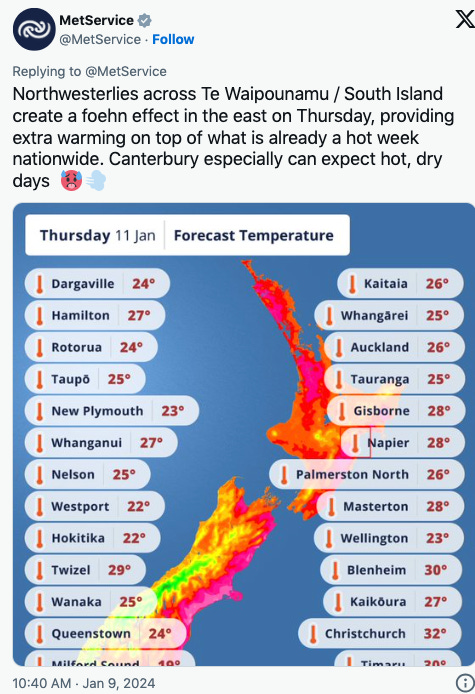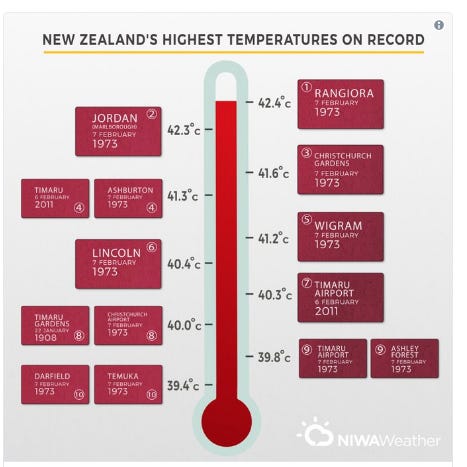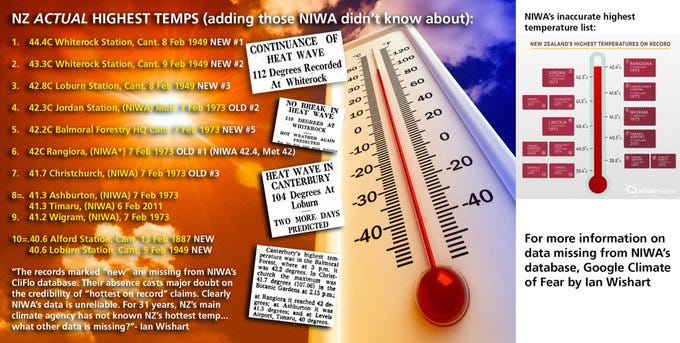In recent times the spectre of water shortages in New Zealand’s capital city has raised its head and this has been put down to a combination of climate change and a problem with Wellington’s infrastructure.
Wellington warned of water shortage this summer
This was from late last year:
Chance of acute water shortage in Wellington increases
22 December, 2023
The chance of Wellington experiencing an acute water shortage this summer has increased, while emergency water tanks sell out around the region.
New modelling from Wellington Water shows there is now a 33 percent chance of the region seeing an acute water shortage rather than a 24 percent chance that had been previously recorded.
Under that type of shortage, level 4 water restrictions would be brought into place which would ban all outdoor water use and reduce indoor water use by up to 50 percent.
Businesses would also have to significantly reduce their water usage.
As of today Wellington has brought in restrictions
Wellington enters level 2 water restrictions
The Wellington region moves into level 2 water restrictions today, meaning a ban on household garden sprinklers and irrigation systems.
Wellington Water said the restrictions gave the region a chance to avoid a stricter ban, while it struggled to fix the ageing pipe network.
This article highlights the problem
Wellington's gutters run with water leaking from decaying pipes, as restrictions loom
Queues for 200 litre water tanks!
Wellington water crisis: Residents queue for tanks, more restrictions likely as city’s water shortage intensifies
Residents in Wellington queued for hours today to get their hands on large storage tanks amid a worsening water shortage in the capital, which could see water restrictions tightened further.
A large queue in the Wellington tip shop car park began around 8am as demand for the 200-litre water tanks surged.
Wellington Water regulatory services director Charles Barker said the current rate of water loss is higher than it’s been in the past and there’s a greater chance of tougher water restrictions this year.
“We’re monitoring the situation very closely and our management team is meeting weekly to assess where things are at in terms of all the different components and factors that would influence a potential water shortage,” Barker said.
Yesterday, Sean Plunket, who lives in the capital recorded the frustrations anyone trying to get anything from the bureaucracy has to endure.
Sean Plunket Complains to Wellington City Council About Leaking Fire Hydrant
And yet, clearly Wellington Water who have hardly lifted a finger to do anything and give every excuse in the book are clearly not that busy.
Wellington Water staffer behind 'slacking off' video 'genuinely remorseful', employer says
Wellington Water worker who bragged on social media about slacking off at work is "genuinely remorseful about making the video", her employer says.
An internal investigation is underway after RNZ reported on the 'day-in-the-life' style video posted to video sharing website Vimeo, which showed the woman going into work at the Wellington Water building in Lower Hutt.
Speaking in Mandarin, the engineer said she had been working at home for two days "half lying down", which she explained was "actually doing nothing".
Wellington Water said it could not comment on the investigation, but said it was taking the situation seriously.
And yet they pat themselves on the back in this propaganda video on “everything they are doing” to fix leaks
“Pull the blinds and let’s pretend we’re moving”
Leonid Brezhnev in Soviet era joke
Word is that the Council is broke.
It is hard to find recent stories on this on the search engines- I had to go to my own archives for this. There is denial from the woke council and silence in the local media
Independent experts find potential $1b hole in Wellington City Council books
Three prominent Wellingtonians are so worried about the city council’s finances that they’ve paid for independent experts to take a look at the books.
The resulting economic analysis suggests the council could be facing a $1 billion funding gap in unbudgeted costs and is on track to breach its debt covenants.
It’s not as if this story began yesterday.
This is from 1 year ago.
Leaks like a sieve': Wellington's water warning as city running out faster than expected
Wellington is running out of water faster than expected, with residents being warned they might be limited to two-minute showers over summer. And as Alexa Cook reports, the water shortage is largely caused by leaky pipes
The problem is that Wellington is more woke than any other place in New Zealand and they are more worried about “net-zero” than fixing and maintaining infrastructure so there is enough for the population to drink and there are no leaks.
Look at this bit of public relations:
How Wellington Water is achieving up to 10% in energy efficiency savings
The COVID-19 pandemic has revitalized the importance of resilient and future-ready water and wastewater infrastructure. Companies across the world have begun adopting net-zero and decarbonization goals to become sustainable, resilient, and future ready. Wellington water, which manages the drinking water, wastewater, and stormwater services in the Wellington region of New Zealand is doing just that by implementing an ABB ACQ580 drive solution.
THIS IS AN OLD PROBLEM
Slightly less than 10 years ago New Zealand went through a major el-Nino weather pattern which brought with it some severe drought conditions. I did a lot of research and shouted from the rooftops about what was a major problem looming that was being ignored by everyone.
I was coming from very different assumptions than I was then.Rather than seeing things in terms of abrupt climate change I now see this in terms of long-term and shorter terms cycles.
Apart from that my analysis still stands.
However, I needn’t have bothered for all the good it did. Back then there was almost blanket denial about the bigger picture associated with drought and continually drawing off water as if there was no tomorrow.
The following is some of what I wrote back in 2015-18
This is our riverbed in late-NOVEMBER, 2015. Conditions now, by comparison have been positively lush
A portrait of Wellington’s drought, 2015
5 February, 2015
We have been getting steadily more alarmed at the dryness and lately by the low levels of the river which flows not far from out place.
There seemed to be no official response to what seems to us to be a potentially serious situation, especially combined with what we know about global weather patterns and about the onset of rapid climate change.
We decided to check the local response
It turns out there are some restrictions on watering gardens - every second day or by hand hose. On the other hand, on a walk with the dog we found that the street was being flooded by Water Services doing its monthly thing of cleaning the drains.
We have gone to some lengths to have a water tank installed to catch and store rain water. However, I have been told that apparently people on the local council are against the idea because, quote, "people will just fill their tanks from the town supply" (while Water Services food the street on a regular basis - sic)
Here was a video I made of the Hutt River close to where we live
Hutt river, 9 March, 2016
In 2015, 8 years ago, my partner, Pam and I recorded the following
I recall vividly that water restrictions were introduced and quickly removed while conditions were still dry and hot.
Back then I was able to ring Wellington Water (or the Regional Council) and actually talk to someone.
I recall to this day the response I got when I asked someone from within Wellington Water; “Some of us wonder that too and discuss it over morning tea breaks”.
Since the covid-19 pandemic it has become impossible to ring,get a receptionist and get put through to someone.
The Hutt River, water source for the whole region, in deep crisis
Wellington's water crisis is deepening despite usage dropping with the rollout of a sprinkler ban, and more restrictions are likely sooner rather than later.
On Friday, available water only outstripped usage by two million litres, and that was with the region already drawing heavily from emergency lake supplies that would normally remain untapped until late January.
On first day of summer, seven per cent of the water in the lakes at Te Marua, north of Upper Hutt, had been drawn away
Headlines from 2017
More water restrictions likely in Wellington as emergency reserves are drained
This is what the lower regions of the Hutt River before it flows down to the sea, near our house looks like less than a week into summer.
Already everything is drying off but more seriously the river is already down to a trickle here (which can in part be explained by aggradation).
It is more than a trifle earlier to be having a problem with toxic algal blooms and for the region to go into using the emergency reserves of water.
In the meantime it has been announced that hopes of finding an emergency drinking water supply beneath Wellington Harbour have been dealt a blow, with the first source turning out to be too contaminated
These were headlines in 2017
Water for Wellington is taken from the Hutt Valley and is reticulated parallel to SH2 and is thus subject to damage by earthquake.
This is an article setting out the plans.
The science of a water aquifer
6 July 2017
A world-first operation to drill for freshwater under the sea has just begun in Wellington Harbour.
The idea is to find an alternative source of water for Wellington city, in the event that the existing water pipeline from the Hutt Valley is damaged in a large earthquake
The Waiwhetu Aquifer already supplies much of the drinking water for the Wellington region. By size it is the fifth largest aquifer in New Zealand – it covers 75 square kilometres, compared to the Christchurch artesian system which is more than 3600 square kilometres
By the end of the year these expectations were scuppered because the harbour is too contaminated and treating it would be prohibitively-expensive.
Potential emergency water source beneath Wellington Harbour contaminated
December 05, 2017
Hopes of finding an emergency drinking water supply beneath Wellington Harbour have been dealt a blow, with the first source turning out to be too contaminated.
When two aquifers were found during drilling in August, the discovery was hailed as a potential lifesaver for the city, in the event of piped water supplies being cut off by a big earthquake.
The majority of the city's water is supplied via a pipe running along State Highway 2, which lies right on a faultline.
If this line were severed, it is predicted the city and eastern suburbs could be without water for up to 100 days
In the midst of all this, I discovered that our precious water was being bottled and exported. I have to assume that the consent has expired and this is no longer happening
Hutt River's water wasted as bottled water, but council says its hands are tied
Bottled water giants could be sucking the Hutt River dry, residents fear.
A consent granted to a water company in 2013 is concerning residents who've pleaded with the Greater Wellington Regional Council to stop wasting their water. ..
BY 2020-21 New Zealand moved from el-Nino into a cooler la-Nina condition which brought with it lots of rain and conditions that made ti difficult to grow
La Niña conditions expected this summer for New Zealand
In New Zealand northeasterly winds tend to become more common during La Niña events, bringing moist, rainy conditions to northeastern areas of the North Island and reduced rainfall to the lower and western South Island.
Warmer than average air and sea temperatures can occur around New Zealand during La Niña.
This summer, after a long period of wetter and cooler conditions moved into a drier and warmer phase. The recent heat wave, which brought “astronomical” temperatures of 27C, was described as “dangerous” and connected, of course, to climate change; parents were warned to keep their children indoors.
Weather: Risk of overheating as scorching temperatures hit New Zealand
People in parts of the South Island are being warned to stay hydrated and take care with an intense heatwave forecast to roll in later this week.
Te Whatu Ora is urging people to keep cool as temperatures are predicted to reach 32C in Christchurch on Thursday
Weather: More scorching temperatures forecast as warm air, high pressure arrives over New Zealand
It was a scorcher around the country yesterday, and there’s still plenty of heat to come in the lead-up to Christmas, with more 30C-plus temperatures forecast this week.
It comes after temperatures in eastern parts of New Zealand topped 30C yesterday.
Kaikōura Airport recorded the highest temperature, reaching 32C at 3pm, with Timaru a close second, hitting 31C at 4pm.
In the North Island, Napier had the pick of the weather, reaching temperatures above 30C.
Even back in 2019 I was able to provide context which showed that the country has seen much hotter conditions in the past.
Making sense of media coverage of a heatwave
The highest recorded temperature in Nelson is 36.3 °C (97 °F), the lowest −6.6 °C
(20 °F).
According to Niwa, the top 10, all above 39 degrees Celsius, were mainly recorded in Canterbury. The highest was 42.4C in Rangiora.
The only top temp that wasn't recorded in Canterbury was the second-highest – 42.3C in Jordan, Marlborough.
This recent article by Ian Wishart who is far more of a sceptic than I am provides context for the propaganda we are being fed, which contrasts with what was being said back in the 2010’s.
NIWA temperature records found to be false: spot audit
Massive errors have been found in the official temperature records that government climate change agency NIWA has used to declare 2022 the “hottest year on record”.
The errors emerged during a spot audit of NIWA’s 2022 Annual Climate Summary report and, as investigative journalist IAN WISHART explains, the data errors are so serious that none of NIWA’s claims about highest temperature records over the past decade can be trusted:
NIWA’s Annual Climate Summary Report for 2022 has been found to contain false claims about record-breaking temperatures, nullifying its official statements that 2022 was “New Zealand’s hottest year on record”.
The mistakes are not simple typos during data entry: instead, they are a direct result of NIWA once again failing to enter historical data into its main CliFlo database.
Because the errors are based on a critical methodology failure, it means none of NIWA’s claims about other recent “hottest years” can be trusted by the government, the public or the news media, without a full audit of the main NIWA database against historical temperature data the agency has failed to enter in its system.
CONCLUSION
The conditions I described a few years ago have long been forgotten.
The narrative has done a big shift; after a couple of years of cold wet weather it is easy for the propagandists to persuade news consumers that the current conditions are extreme.
Conditions in the Hutt Valley have been forgotten.
However, in the meantime problems with infrastructure have been been allowed to get worse and worse as Councils concentrate on other things like event centres and “inclusivity” policies.
Authorities are literally acting blind as they create the impression of doing something whilst doing nothing.
As I write this I have to assume that as we move back into an el-Nino situation we are going to see more as summer goes on and we move into autumn.
Then the question becomes, if things were bad in the 2010’s how is it going to look when the conditions I have described above combine with the clusterf*ck that is the Wellington City Council and the private company, Wellington Water.
